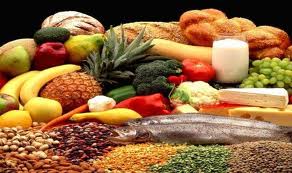Diets
- AIDS Diet
- Athletes's Diet
- Atkins Diet
- Bodybuilding Diet
- Breast Feeding Diet
- Cabbage Soup
- Cancer Patient's Diet
- Cardiac Patient's Diet
- Pediatric Diet
- Diabetes Diet
- Diet Plan
- Diet Programs
- Fitness Diet
- Cardiac Patients
- Kidney Disease Diet
- Low Calorie Diet
- Hypertension Diet
- Pregnancy Diet
- High Protein Diet
- Sports Diet
- Vegetarians Diet
- Weight Gain
- Fasting Diet
- Calorie Diets
- Celebrity Workout
- Diet for Gout
- Herbal Diets
- Zone Diet
- Herbal Phentermine
- South Beach Diet
- High Fiber
- Low Carb Diets
- Low Carb Dieting
- Low Carb Dieter Eat
- Atkins Low Carb Diet
- Atkins Low Carb Diet Program
- Monounsaturated Fats
- Food Choices Low Carb Meals
- Shopping Right Supplements
- Top 3 questions for Low Carb Dieting
- Better Food Choices
- Fluorosis
- Wu Yi Tea
- Ultra Lean Green Tea
- Acai Berry Power 500
Diet for Cardiac Patients: Diet for Healthy Heart
There has been a great deal of publicity concerning cholesterol and its relationship to coronary artery disease. A high level of cholesterol in the blood stream is considered a risk factor in the development of coronary artery disease, yet there is an inadequate body of evidence which would suggest that reducing dietary cholesterol alone can lower blood cholesterol levels significantly. Recent evidence supports the fact that decreasing the amount of saturated fat along with cholesterol (i.e. decreasing the consumption of meats) in the diet will decrease blood cholesterol significantly.

Cholesterol is a waxy, yellowish substance produced by the liver. It can be found in any part of the body and is essential for fat digestion. Cholesterol provides the building blocks for cell membranes, bile salts, vitamin D, sex hormones, and adrenal gland hormones. In the average American diet, the body produces 2/3 of the total amount of cholesterol that we need and the rest comes from our diet (our body could produce all of it if cholesterol was absent in our diet).
Cholesterol is present ONLY in animal products, not in vegetable products. Since Americans on the whole consume a diet high in animal products, they also consume a large amount of cholesterol. Cholesterol and fat are insoluble in water and must be carried in the blood by protein substances known as lipoproteins. Lipoproteins are composed of fat and protein (hence their name) and each lipoprotein carries different amounts of cholesterol. Low density lipoproteins (LDL) carry mostly cholesterol, and very low density lipoproteins (VLDL) carry mostly fats (triglycerides). High levels of these carriers have been linked with the development of coronary artery disease. Another carrier known as high density lipoprotein (HDL) consists of mostly protein. HDL's carry cholesterol away from the body cells, back to the liver to be excreted in the bile. This may be the reason why high levels of HDL have been found to lower the risk of coronary artery disease.
Investigators have not determined what an "ideal" blood cholesterol level should be. In general, the risk of coronary artery disease due to blood cholesterol level alone rises slowly when the level is BELOW 200 milligrams per deciliter (mg/dl). The risk of coronary artery disease begins to increase more rapidly ABOVE 200 mg/dl, especially as levels rise ABOVE 240 mg/dl. In short, many experts recommend a blood cholesterol level BELOW 200 mg/dl. It is interesting to point out that very LOW cholesterol levels (under 110-125) in the elderly population have been associated with malnutrition and a depressed immune response to disease. It is likely that more research will be needed in this area.
Dietary Recommendations for Cardiac
General Guidelines:
- Lower the amount of total fat in your diet by eating fewer high fat foods. High fat foods often contain large amounts of saturated fat (most undesirable fat source).
- Lower the amount of saturated fats while increasing the amount of polyunsaturated fat in the diet.
- Lower cholesterol intake. Eat more fruit and vegetables and less animal products.
- Eat more complex carbohydrates (starch and fiber). Foods high in complex carbohydrates are usually low in fat and contain no cholesterol.
- Lose weight, if overweight, by decreasing the number of calories taken in and increasing the number of calories used.

To Eat Less Total Fat:
- Within any food category, there are high fat and low fat items. Read labels to learn which foods are low in fat.
- Sausage and most processed luncheon meats are high in fat and saturated fat.
- Cream, sour cream, ice cream, butter, and many cheeses are high in fat and saturated fat.

To Eat Less Saturated Fat:
- Steps you take to reduce total fat will also reduce saturated fat.
- Most animal fats generally contain high proportions of saturated fat, whereas the fat in chicken and fish contains higher proportions of polyunsaturated fat.
- The vegetable oils from palm kernel, coconut, and palm, and cocoa fat contain large proportions of saturated fat.
- Vegetables oils with the highest proportions of polyunsaturated fat are safflower, sunflower, corn, soybean, and cottonseed oils.
- Many margarine's are lower in saturated fat and higher in unsaturated fats than butter.

To Eat Less Cholesterol:
- Cholesterol is found in high amounts of red meats, organ meats (liver, kidney, sweetbread, brain), and egg yolks. Shrimp is also high in cholesterol.

To Eat More Complex Carbohydrates:
- Vegetables, fruits, cereal grains, dried peas and beans, rice, and pasta contain complex carbohydrates, little or no saturated fat, and no cholesterol.

To Help Lose Weight, If Overweight:
- Fats are high in calories. Fat and oils supply 9 calories per gram as compared to protein, and carbohydrates, which supply only 4 calories per gram.
WHICH PEOPLE NEED TO ADHERE TO THE ABOVE ADVICE?
- Everyone, the younger you start healthy eating habits the better.
- Patients with a history for hypertension, congestive heart failure, coronary artery disease, stroke, peripheral vascular disease, or diabetes MUST make an extra effort to watch what they eat to lower their risk of atherosclerosis.
RISK FACTORS FOR CORONARY ARTERY DISEASE

Risk factors you cannot change:
- Heredity- heart disease tends to run in some families.
- Sex- men have a higher rate of coronary heart disease than women.
- Age- heart disease incidence increases with age.
- Diabetes- although better control can lessen risk.
- Low HDL level in the blood.
Risk factors you can change:
- Smoking
- High blood pressure
- High blood cholesterol
- Obesity
- Lack of exercise

Hope this article provides you information about diet for cardiac patients.
